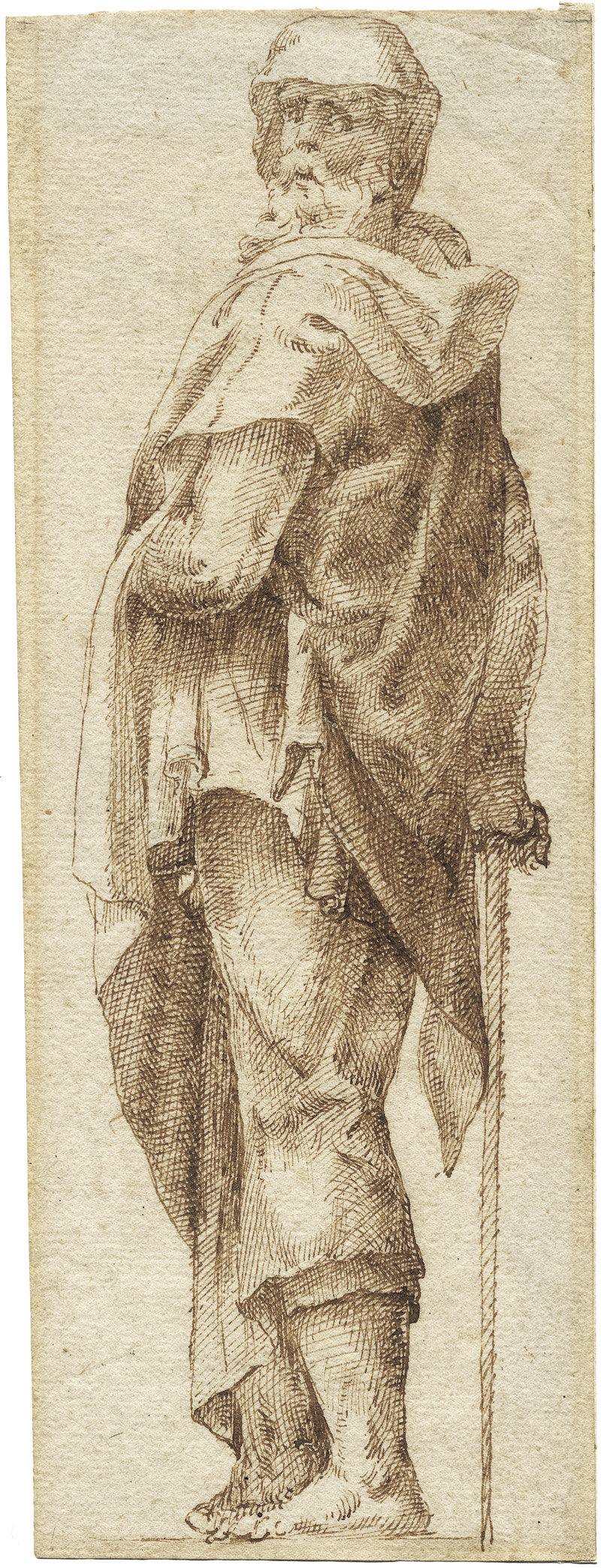Loading the page ...
Lelio Orsi
(1508–1587, Novellara)
Figure Study of a Bearded Man (Design for a Telamon). Pen and brown ink. 19.8 x 7.2 cm.
Born in the little Emilian town of Novellara, the painter and architect Lelio Orsi is undoubtedly one of the most interesting and wayward personalities of the Italian Cinquecento. Having worked as a painter in Reggio for ten years, Orsi was forced to leave the city in 1546, allegedly because of his involvement in a murder case, and returned to Novellara. In his home town he enjoyed the special protection of Alfonso and Camillo Gonzaga, who were distantly related to the ruling family of the same name in Mantua and gave him numerous commissions. In the company of these noble patrons Orsi also undertook study trips to Venice (1553) and Rome (1554–56).
Almost nothing has been preserved of Orsi’s panel paintings and frescoes. His drawings are also very rare. The present figure study is one of a set of designs for caryatids and telamons, which should be seen in connection with Orsi’s work as the author of façade paintings. In 1563 Alfonso Gonzaga launched an ambitious architectural project to restore the façades of the town of Novellara and decorate them with frescoes. Orsi and his assistants were entrusted with the decorative painting of numerous palazzi. Although these façade paintings have nearly all been lost, this aspect of Orsi’s work is documented by a collection of designs for friezes as well as by architectural and ornamental drawings (see the exhibition catalogue Lelio Orsi, edited by Elio Monducci, Reggio Emilia, Teatro Valli, 1988, nos. 99–100).
The somewhat nervous and jagged penwork of the present figure study is a valid example of Orsi’s drawing style, which is characterized by expressive, almost edgy and scratchy line work with close hatching patterns and strong chiaroscuro effects.
A certain eccentricity is common to all these works. The bony head of the man with its deep eye sockets and wild beard has something gloomy about it, and the artificially contorted pose betrays a mannerist affectation. The figure was very likely intended to form part of a larger façade decoration as the bearer of an ornamental plinth or other architectural element.
